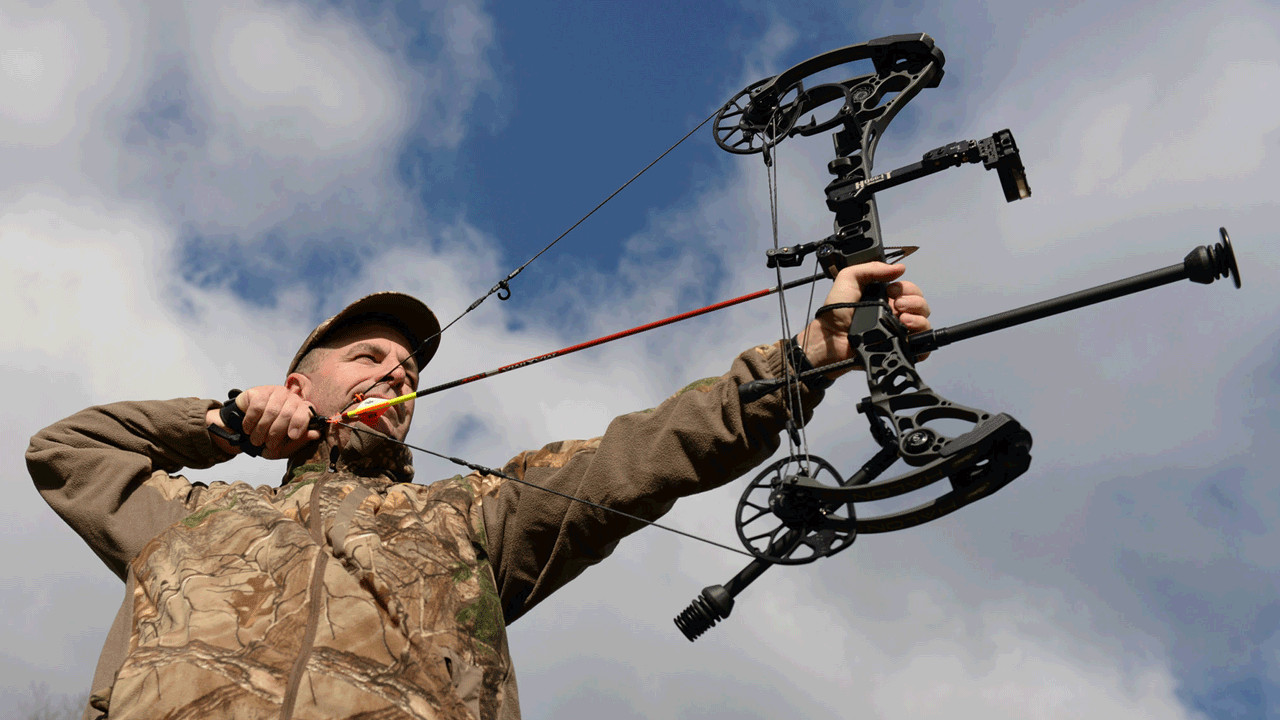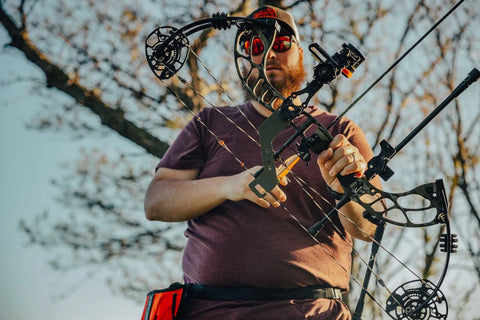Unlock Your Archery Potential with the Right Compound Bow Stabilizer
Unlock Your Archery Potential with the Right Compound Bow Stabilizer
Blog Article
Maximizing Your Archery Efficiency With the Right Compound Bow Stabilizer: an Extensive Review
In the realm of precision, consistency and archery are vital to accomplishing optimum efficiency. One often-overlooked yet essential element in boosting precision is the compound bow stabilizer. This simple tool plays a substantial role in steadying your purpose, minimizing bow torque, and soaking up vibrations. However, the effectiveness of a stabilizer depends upon numerous aspects, including weight, design, and positioning. By understanding the nuances of selecting and optimizing a compound bow stabilizer, archers can adjust their tools to boost their shooting experience to new levels of proficiency and control.
Significance of Bow Stabilizers in Archery

Furthermore, bow stabilizers aid in balancing the weight circulation of the bow, which can enhance the archer's stability while firing and intending. By adding weight to the front of the bow, stabilizers can minimize the quantity of torque experienced upon release, causing a smoother and extra controlled shot - compound bow stabilizer. This weight circulation also aids in holding the bow stable for a longer duration, enabling the archer to intend extra accurately
Types of Substance Bow Stabilizers
When thinking about the various kinds of compound bow stabilizers offered, it is important to understand their distinctive attributes and features to figure out the most ideal choice for making the most of archery efficiency. The most common kinds of compound bow stabilizers consist of sidebar stabilizers, front stabilizers, and back stabilizers. Back stabilizers, also called rear stabilizers, are installed to the back of the bow and aid in reversing the weight of various other accessories, resulting in enhanced security and stable aiming.
Elements to Think About When Choosing
In examining substance bow stabilizers, understanding the distinctive features and features of each kind is important for making an informed choice on the most suitable alternative to enhance archery efficiency. When picking a stabilizer, one need to think about the weight of the stabilizer itself. By very carefully reviewing these view it variables, archers can pick a compound bow stabilizer that lines up with their shooting design and optimizes their overall efficiency on the archery variety.
Installment and Change Tips
For optimum efficiency and precision in archery, understanding the installment and change of your bow stabilizer is important. Appropriate installation starts with connecting the stabilizer to the bow's riser, ensuring it is firmly protected. Many stabilizers include mounting equipment for simple installment, yet it's important to follow the manufacturer's guidelines for the certain design you have. Once affixed, adjusting the stabilizer entails discovering the right equilibrium in between weight distribution and length. Experiment with various mixes until you attain find out here now the wanted feeling and stability.
When adjusting the stabilizer, start with little step-by-step adjustments instead of extreme modifications. This allows you to analyze the impact of each adjustment accurately. Pay interest to how the bow responds to adjustments in stabilizer setups and make changes appropriately. Keep in mind that the goal is to locate an arrangement that minimizes hand torque, reduces resonance, and boosts precision. Frequently examine the stabilizer's rigidity and total condition to guarantee it remains to operate efficiently. By mastering the installation and adjustment process, you can optimize your archery performance and boost your shooting experience.
Upkeep and Treatment Guidelines

It Bonuses is also essential to keep your bow with the stabilizer in a safe and secure and risk-free place when not in usage. Adhering to these upkeep and care guidelines will help you obtain the most out of your bow stabilizer and improve your total archery performance.
Final Thought
Finally, selecting the right compound bow stabilizer is important for taking full advantage of archery performance. Comprehending the significance, types, variables to consider, installment and modification pointers, as well as upkeep and care standards can greatly affect one's accuracy and consistency in shooting. By picking a stabilizer that fits specific demands and preferences, archers can enhance their general performance and accomplish much better outcomes on the array or in competition.
Bow stabilizers play a critical duty in improving an archer's precision and uniformity by minimizing vibrations and stabilizing the bow during the release of an arrow - compound bow stabilizer.In addition, bow stabilizers help in stabilizing the weight distribution of the bow, which can boost the archer's stability while aiming and shooting. The most common types of substance bow stabilizers consist of sidebar stabilizers, front stabilizers, and back stabilizers. Back stabilizers, likewise called back stabilizers, are mounted to the back of the bow and help in counteracting the weight of other accessories, resulting in improved security and stable aiming. When choosing a stabilizer, one must take into consideration the weight of the stabilizer itself
Report this page